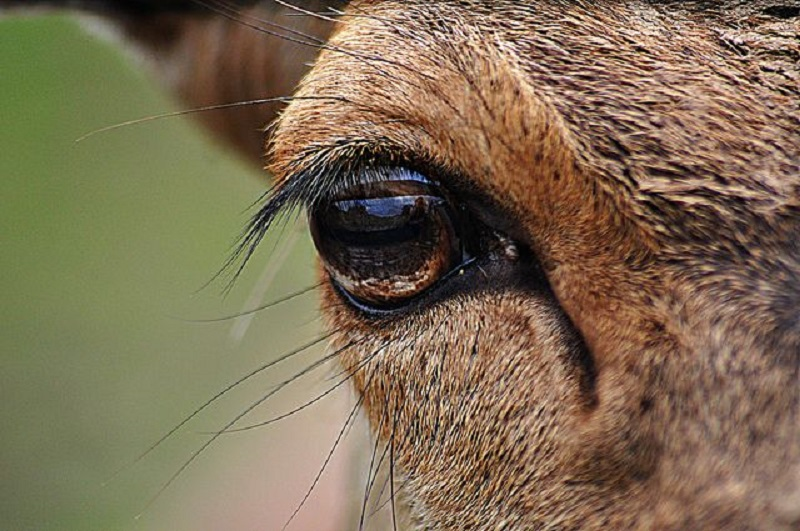
Eyes that sound like rattles
Note 001
Home > Blog A Musician's Log > Note 001
Page thirty-four, page thirty-nine, page forty-two...
Paragraph after paragraph, I turn the pages of Musical and other sound instruments of the South American Indians, the opera magna by Swedish ethnographer Karl Gustav Izikowitz. Published in 1935, the work is an enormous compendium of American Indigenous organology, based as much on bibliography as on museum artifacts and personal communications.
(But sparingly on the author's direct experience studying Indigenous sound artifacts in the Americas.)
I am browsing a chapter entitled "Rattles." Specifically, a section describing hoof rattles, among which deer rattles seem to be the most abundant. The author, after listing the most relevant instruments, is extremely interested in analyzing the role played by deer among the native cultures of all the Americas: the presence of the animals in mythology, in religious and magical practices, in daily life and, of course, in music.
And suddenly, as if unintentionally, among so many somewhat hollow reflections, this curiosity appears:
Another question is then why just the hoofs are used. In answer to this I wish to point out at once that occasionally other parts of the deer are used, although this is more unusual ― as, for instance, inflated deer's eyes which contain a small pebble, among the Havasupai (pp. 45-46).
I read several times, because I don't believe it. But no, I'm not wrong: it talks about inflated eyes with a little stone inside. Dry? I guess. As if they were somewhat macabre jingles, perhaps with a ceremonial meaning, surely with a very faint sound...
I review the third edition of Waldman's Encyclopedia of Native American Tribes. The Havasupai, the "People of the Turquoise Water", are an indigenous people of the Yuma linguistic family who have lived for at least eight centuries in the Grand Canyon of the Colorado River, in the state of Arizona, USA. I can find no data on their sound culture, but the fact that they used curious or somewhat strange musical / sound artifacts would not be a surprise: a good part of the Indigenous societies of southwestern USA and northern Mexico possess (or possessed, according to historical sources), within their organological heritage, elements that are not usually repeated in many other parts of the world.
I go back to Izikowitz. The bibliographic reference he provides to support the mention to the Havasupai rattles is incorrect. It is not the only erroneous one in the book, unfortunately. After a few twists and turns, I manage to locate the correct one: Havasupai Ethnography, a work by American anthropologist Leslie Spier, published in 1928 as part of the Anthropological Papers series of the American Museum of Natural History.
It takes me a while to find the document, but eventually I get a copy. I look for the quoted page. And there it is. In describing the making of the women's deerskin dresses, and how they decorated them with rattles, the author points out:
On old women's dresses these jingles include deer eyes (which lack special significance). They are prepared by cutting a tiny hole to drain the fluid within, blowing them up to dry, inserting a kernel of corn, and tying the aperture. Similar rattles are also threaded on the side fringes for a short distance down from the belt (p. 187).
They did not have a pebble inside, but a kernel of corn. (That's why one should always check the original sources of information). And, apparently, they had no special meaning. They were simply an ornamentation in the women's clothes. A sonorous ornament. Eyes that sounded like rattles. Small artifacts that, surely, would make women resonate softly as they walked.
In my book, Izikowitz keeps talking about rattles. The pages move before my eyes: forty-six, forty-seven, forty-eight. I confess that now I read with more interest. Who knows what other surprises will I find...
References
- Izikowitz, Karl Gustav. Musical and other sound instruments of the South American Indians. Göteborg: EBA, 1935.
- Spier, Leslie. Havasupai Ethnography. New York City: The American Museum of Natural History, 1928.
- Waldman, Carl. Encyclopedia of Native American Tribes. 3.ed. New York: Checkmark Books, 2006.
This post belongs to a compilation that has been published by El Zorro de Abajo Editora. That publication can be accessed through the section "Articles" at Instrumentarium.